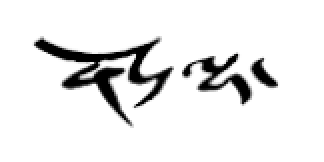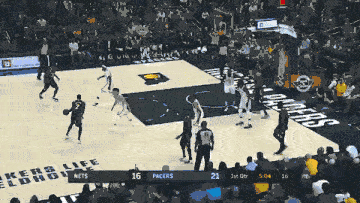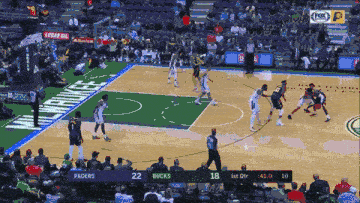Contents > 2. Defense > 2.1. Player-to-Player, 1/4 Court Defense > 2.1.4. Combined Defensive Situations > 2.1.4.1. Defending Screens > 2.1.4.1.1. Defending Screens: On-Ball >
2.1.4.1.1.2. Defending Screens: On-Ball Drop
(1) Q: What is “drop” in on-ball screen defense?
A: A drop is when the defender of the screener does not switch, and instead drops down momentarily, helping defend on both the ball-handler and the screener until the original defender getting screened can return to the on-ball position. By dropping down, this defender can prevent both the pass to the roller in a screen and roll, as well as a dribble-drive by the ball-handler.
(2) Q: What should the defender in the “drop” position be doing?
A:
Communicate: similar to when switching, the drop defender must first communicate to the on-ball defender that a screen is coming, and that they will be dropping (e.g. “Screen Left! Drop!”).
Drop & Help on Two: It is best if the drop defender is in a position where both the ball-handler and roller are in front of them, staying between the two.
Timing: This defender will stay in the help drop position until the screened defender can recover on-ball; they will then return to their original assigned offensive player (the screener/roller) in deny defense.
(3) Q: What should the defender getting screened be doing?
A: The defender getting screened must quickly get on the other side of the screen to resume defending the ball-handler (also called “fighting through the screen”). They have the choice of going over the screen or going under the screen. Going over the screen is best to force the ball-handler to dribble drive (if the ball-handler is not as good dribbling and/or is very good at outside shooting), while going under the screen is best to force an outside shot (if the ball-handler is not strong at outside shooting).
(4) Q: When should we use “drop” against an on-ball screen?
A: Using a non-switching strategy like “drop” is best to use when the defenders are different sizes, usually when an offensive post player is setting a screen for a smaller offensive guard. This allows defenders to stay assigned to their similarly assigned offensive player and prevent mismatches. Drop is also best when the ball-handler is not a strong outside shooter. If the ball-handler is a strong outside shooter, they will momentarily be able to shoot after the screen easier in drop (even if the on-ball defender goes over the screen).
(5) Q: What should help-side defense be doing during a drop screen?
A: Help defense should still be available inside the key to prevent the ball-handler from passing to the roller and any dribble drives. By helping, this will also allow the defender in the “drop” position to focus on the ball-handler if the ball-handler dribble drives. The closest helper can help defend the roller until the drop defender returns fully to defend the roller. This is also called “tagging” the screener, and the defender in the help position on the screen is called the tagger (very similar to helping the helper).
(In this example, X3 is in a position to “tag” the screener/roller O2, if O1 dribble drives and X2 needs to defend O1 closer until X1 recovers on-ball).
SKILLS DRILLS
Skills Drill #1 - 2v2 Defending On-Ball Screen, Post to Guard (Drop)
O1 will start with the ball on either wing. X1 will be defending on-ball. O2 will start on the corresponding block, with X2 in ¾ front post deny defense.
O2 will set an on-ball screen for O1. X2 will play drop screen defense, and X1 must get through the screen (either over or under the screen).
First, walk through this to ensure understanding. Then, play live 2v2 with an on-ball screen from the post and drop defense. Offense has 7 seconds to score. O2 may also post up if they wish before setting the screen.
Skills Drill #2 - 3v3 Defending On-Ball Screen, Post to Guard (Drop)
The same as Skills Drill #2, however now O3 will be in the opposite corner (stationary), and X3 will be in help defense.
Walk through first to ensure understanding, then play live 3v3 with an on-ball screen coming from the post and drop defense (first with O3 stationary, then with O3 free to move).
















